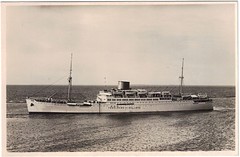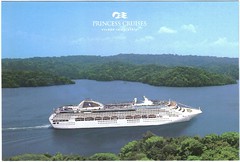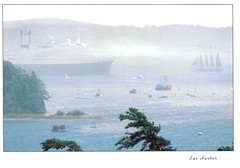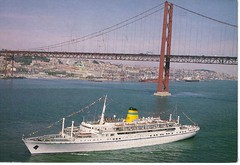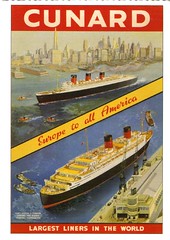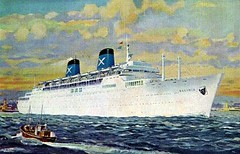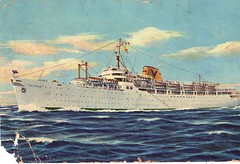Two postcards I came across this week which highlight how ocean travel has changed over 70 years.
Tegelberg: (Info from Ronald Turner’s web page)
Dutch passenger ship
Built at Nederlandscae Sb hij in 1938
Capacity: 640 passengers.
GRT: 14140,
Length: 170.5 metres,
Width: 22 metres,
Speed: 17/18 knots
Converted to a Troopship and chartered for the Ministry of War, Liverpool, in 1942, capable of housing 2681 troops.
Broken up at Kaohsiung in 1968 after 30 years of service.
Dawn Princess: (Info from Wikipedia)
Built by Fincatieri, in Italy in 1996.
Capacity: 1950 passengers, 900 crew.
GRT: 77,500
Length: 261m
Width 32m
Speed: 21 knots
My father travelled on Tegelberg between India and the UK in 1945. He tells me he remembers being aboard the ship, and how all the children were told to stay below decks at one point during the voyage while they buried a recently deceased Italian prisoner of war at sea.
Despite having 1/5 the GRT of a modern day cruise ship like Dawn Princess, Tegelberg was required to carry over 2,000 crew during her war service. One can only imagine how crowded that must have been.

